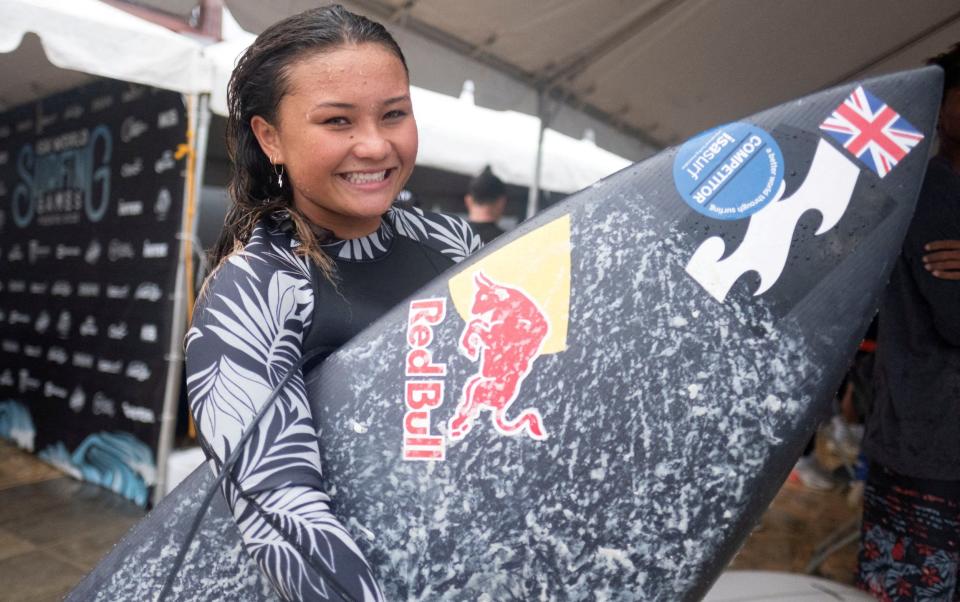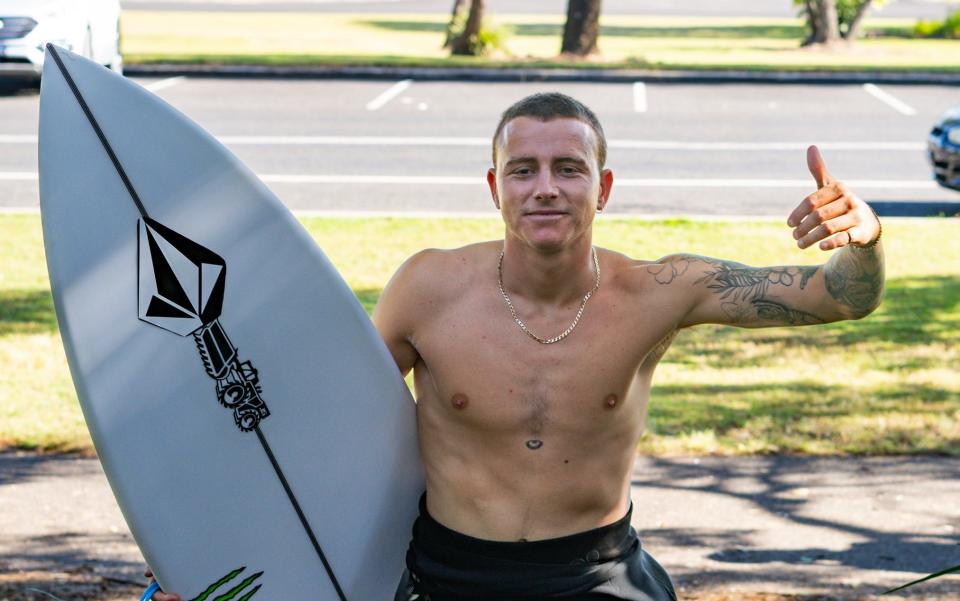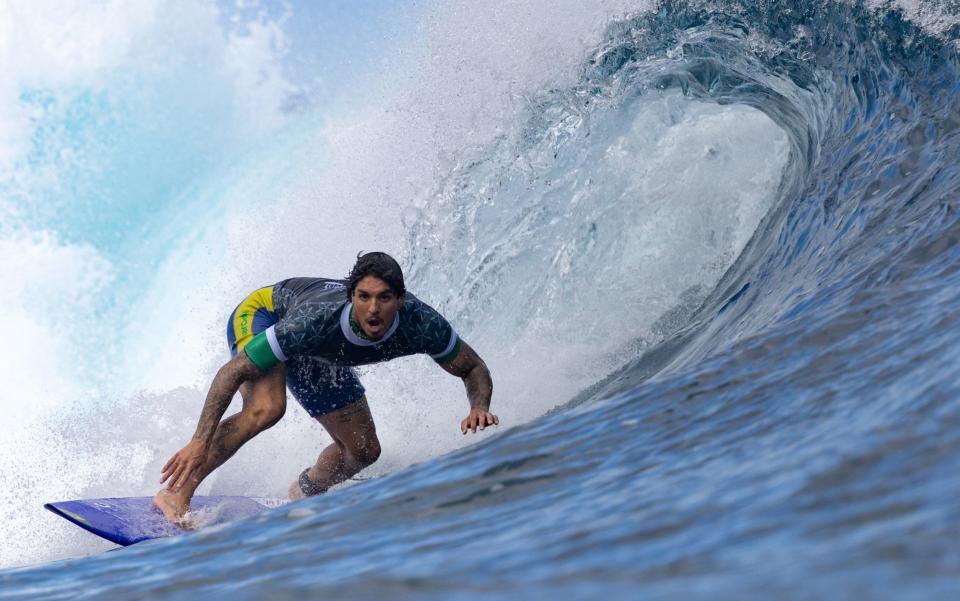Sports
Why Olympic surfing event is taking place 10,000 miles from Paris



Anyone tuning in to watch the Olympic surfing which begins on Saturday will notice that the backdrop looks rather exotic for France; mountains covered in lush rainforest, waterfalls cascading from rocky cliffs, sparkling blue waters. It looks like the land that time forgot; the kind of place King Kong might get into a fight with a T-Rex.
That is because the Olympic surfing is taking place not in Biarritz, or Hossegor, or Lacanau, or any of France’s famous surf spots. It is taking place in Tahiti in French Polynesia, nearly 10,000 miles from the epicentre of the Games in Paris.
The selection of Teahupo’o — which sets a record for the furthest competition from a host city in Olympic history — was, unsurprisingly, controversial. Locals and environmentalists alike condemned the construction of a $5million (£3.89milion) aluminium judges’ tower in the local reef. There were concerns over the event’s carbon footprint, not to mention where to put everyone up in a tiny village known locally as ‘The End of the Road’. Olympic organisers ended up hiring a 126m-long cruise ship called Aranaui 5, which will house competitors and officials offshore in a floating athlete village.
It should be spectacular though. “The inaugural event in Tokyo did nothing to bring people to the sport,” says GB Surfing’s performance coach, Luke Dillon, who hopes Tahiti’s stunning backdrop and reliable waves, which have played host to a round of the championship tour for years, will be a boon for Tahiti and for surfing in general. “With the swell, the mountains and the background, it’s going to look amazing. Teahupo’o really is stunning and has some of the best surf in the world.”
Unfortunately, there will be no British surfers dropping in on Teahupo’o’s barrels. Sky Brown, the Olympic bronze medal-winning skateboarder, narrowly failed to qualify at the ISA World Surfing Games in Puerto Rico earlier this year, missing out by one heat. The 16-year-old had been hoping to compete in both sports at Paris 2024, investigating with the BOA the possibility of hot footing it 10,000 miles from the middle of the Pacific to the French capital mid-Games. Reigning British men’s and women’s champions Stan Norman and Lauren Sandland also missed the cut.


That does not mean the British surfing dream is over. “On the contrary, we’re just getting going,” says Vicky Gosling, the chair of GB Surfing, bullishly. “We expect to be competitive in Los Angeles in four years’ time. And by Brisbane [2032] we expect to be getting podiums.”
Gosling, who was parachuted in mid-cycle, hopes to deploy similar methods in surfing as she has in GB Snowsport, which has achieved notable success during her tenure as chief executive, despite operating on a (relatively) shoestring budget.
“The similarities are there,” she says. “It’s not like we haven’t got the surfers. They just haven’t been given the opportunity to get that time in the water. Or at least, not in the places you have to train if you’re going to compete with the world’s best.”
Gosling cites the example of Dillon, who has recently retired, insisting the 29-year-old from Newquay “would certainly be competing in Tahiti right now if he’d had the backing”. She points to youngsters such as 21 year-old Norman, or 22-year-old Ellie Turner, both from Bude in Cornwall, as proof that Britain has talent coming through.
“Ellie finished fourth at the 2016 Under-16s ISA World Surf Games in Biarritz when she was just 14,” Gosling says. “That made her the first British surfer to win a medal at the ISA World Surf Games. And the winner of that final was Caroline Marks, currently the best female surfer in the world.”
There are others in the pipeline. Sixteen-year-old Lukas Skinner has won silver two years in a row at the Under-16s World Surfing Games. “What they need is the opportunity to show what they can do on a bigger stage,” Gosling says.


As ever, money is too tight to mention. Surfing was awarded £1.3million in funding for this cycle but did nothing with it until Gosling arrived midway through. Bringing in Dan Hunt, formerly of British Cycling, Team Sky, Premier League and GB Snowsport, they launched the GB Surfing Progression Squad in November last year, backing five young athletes including Norman, Turner and Skinner (but not Sky Brown, who does her own training out in America).
Since then, the squad has had two training camps in Australia and three in Portugal, with a UK one starting in a fortnight. Over 100 days in total. While out in Australia, they had access to world-class coaches including Andy King, who famously coached Mick Fanning to three world titles and now coaches Gabriel Medina, the three-time world champion and favourite for the men’s title in Teahupo’o. And access to JS Industries boards.
Unfortunately it came too late for Teahupo’o, but Norman says he sees no reason why he cannot qualify for Los Angeles. “We only had a month in Australia prior to the Olympic qualifiers in February, and I got maybe 20 spots better than I’ve ever done in my career prior to that,” says Norman, who finished 31st, with a 22 per cent points increase from the previous year. “With another year of the best training and being on the best boards and getting coached by the best people, I’d expect to make a big jump for sure.”
Britain bullish over long-term prospects
The immediate goal for GB’s young cadre is to qualify from Europe’s Regional Qualifying Series (RQS) to the international Challenger Series. The first event is coming up shortly at Boardmasters in Newquay in August, with four further competitions in August and September. Finish high up in the RQS and you make the Challenger Series. From there you are one step from the WSL’s Championship Tour.
“Honestly, when I think how we wasted two years,” Gosling says. “But as I say, we have the talent. And we have grit. I mean, our guys literally do it in all weathers in all conditions. They are steely as you like. I was speaking to Sky’s dad in Puerto Rico, at the qualifying event, and he was saying there’s no real appeal in coming to England to surf because actually, you know, she’d have to put on a wetsuit! And she’s not used to doing that!”
Brown is an interesting one. She was actually out in Puerto Rico with the Japan team and there was a fear she might switch nationality in an effort to qualify for LA 2028, where the surf competition will take place on her home break of Huntington Beach.
Gosling, though, says Brown and her dad Stuart came to have breakfast with the GB squad one morning in Puerto Rico and she got a good vibe. “She’s really keen to be a surfer for GB,” Gosling says. “She got to meet the team properly. And she was a delight, actually. She put the GB kit on. It’s just a question of money really for us. I think she’d be proud to be part of it, having already medalled for Team GB.”
Funding is the constant worry. GB Surfing has just heard it has been awarded £1.3million again for the next cycle, only this time it will have to spread it across four years rather than two. Nor will the athletes have access to APAs (athlete funding), which is a further blow.
“The other nations laughed when I said we had £1.3million and now it’s divided between four years,” Gosling says. “They were literally like ‘how many surfers do you have and what do you expect to do with them?’
“Of course we want more money, we want to hire permanent world-class coaches. But we’ll get there, with private backing or sponsors. As we’ve seen with GB Snowsport, we can make this model work.
“Our foundations are improving. We have a new artificial wave centre opening in Edinburgh, with a surf lab, similar to The Wave in Bristol, which could become a performance centre. And we’re working on our Talent ID program, co-funding coaching positions in Channel Islands, Scotland, England and Wales so there’s continuity there.”


For now, GB’s surfers will have to watch on television as the best in the world do battle in Tahiti. It promises to be gnarly in every sense. Teahupo’o literally translates as “wall of skulls” due to a local legend which says that a tribal battle once ended with the victors displaying their enemies’ skulls. Not so far off King Kong’s Skull Island after all.
Norman will be watching intently, dreaming of LA in four years. “It’s going to be sick,” he says. “A week ago there was a massive swell in Tahiti. Like, the biggest swell they’ve seen in years. The waves in Tahiti can reach 20-foot, like really big, steep barrels, although I’ve heard more recently that it’s way smaller, windy and not amazing conditions. It can all change in hours, though.”
Norman is backing Brazil’s Medina to pick up gold in the men’s event. “We were training with his coach out in Australia and he said he wants to retire, but he wants that gold medal first.” For the women, his pick is the American Carissa Moore. “She’s just retired from the WSL and she has nothing to lose. They’re my two favourites.” Really, though, he just wants to be out there himself.
“Having surfing in the Olympics is huge. I don’t know how many people watch the Olympics in the world, but it must be crazy numbers. It’s exciting to think I could be part of it in the future.”







